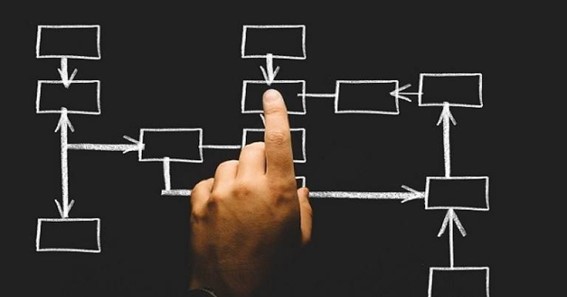Flowcharts are diagrams that represent the sequence of steps in a process. They’re widely used in fields like business, engineering, and computer science, and they can be helpful tools for learning and instruction as well. This post will provide an overview of how flowcharts work, when to use them in education, and some tips for creating effective flowchart diagrams.
1. What Are Flowcharts?
Flowcharts are diagrams used to represent the sequence of steps in a process. They can be helpful tools for learning, instruction, and problem solving. Flowcharts consist of a series of boxes or shapes, connected by arrows, that indicate the order of steps in a process.
Here’s a quick example of how a bill becomes a law flowchart. Take a look spend some time to understand it.
2. When Should Flowcharts Be Used In Education?
There are many occasions when flowcharts can be useful in education. Some examples include:
-Sequencing events or steps in a process
-Identifying problem areas in a process
-Planning a project or assignment
-Organizing ideas for a presentation or essay
-Teaching a new skill or concept
click here – How does AI work on mobile phones?
3. How Do I Create A Flowchart?
In order to create a flowchart, you will need to use a program that can create them. Microsoft Word and PowerPoint both have built-in tools that allow you to create flowcharts.
Alternatively, you can use a standalone program like Visio.
However, these all are kind of obsolete because they are not web-based and in this technological era using these tools would be a bad decision.
Going for something web-based like Zen Flowchart will be much more helpful. It is very easy to use and helps you get the flowchart done in minutes.
Start by mimicking the easy flowcharts available online and once you’ve the hang of it, do it yourself.
- The Benefits Of Using Flowcharts In Education There are many benefits of using flowcharts in education. First, they can help students visualize complex processes. This is especially important for subjects like math and science, where understanding the steps involved in a process is key to mastering it.
Second, flowcharts can help students learn to organize information. By creating a flowchart, students are forced to identify the steps necessary to complete a task and determine which pieces of information are most important. This can help them develop better study habits and learn how to better focus their time.
Third, flowcharts can be used as a tool for assessment. Teachers can use flowcharts created by students as a way to gauge their understanding of a topic or process. The teacher can then use this information to tailor their instruction accordingly.
click here – Everything you need to know about Business Loan Interest Rates
5. Tips For Using Flowcharts In The Classroom
There are a few things to keep in mind when using flowcharts in the classroom:
First, make sure that the students understand what a flowchart is and how to use one. It may be helpful to model how to create a flowchart for a specific task.
Second, give the students sufficient time to create their flowcharts. This may require some class time or homework time.
Finally, be sure to provide feedback on the students’ flowcharts. This can help them improve their flowcharting skills.






